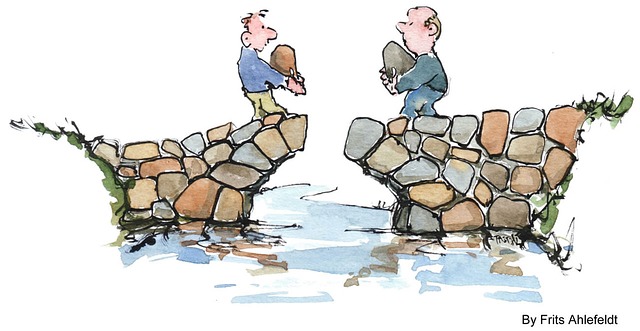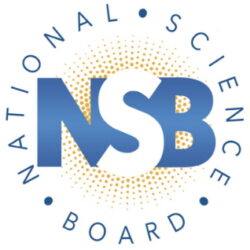Surveying the Terrain of Science’s Public Outreach Past
During the recent panel discussion surrounding the launch of The Impact of Social Sciences: How Academics and their Research Make a Difference book, Angela Cassidy, who wrote a chapter on social science in an upcoming book about science communication, tweeted, “Clear that #Impactsocsci project has some interesting data, but so much of tonight’s discussion like Bodmer era PUS/scicomm all over again.”
Clear that #Impactsocsci project has some interesting data, but so much of tonight’s discussion like Bodmer era PUS/scicomm all over again
— Angela Cassidy (@ange_cass) January 29, 2014
The reference to “Bodmer” went over the Social Science Space editor’s (American) head. A quick check on Google revealed the full PDF of the Royal Society’s The Public Understanding of Science, which was dubbed the Bodmer report after the chairman of the ad hoc committee which penned the report. Google also revealed this 2013 post by chemist and blogger Alasdair Taylor on his attheinterface blog, which offered an easy-to-read map of the science communication terrain post-Bodmer.
***
I recently attended a lecture given by Peter Broks at the University of Nottingham’s Institute of Science and Society. Peter is a Lecturer at Hereford College of Arts and has had a keen interest in popular science and science communication. Peter’s talk was a reflection on the history of science communication in the UK, the approaches used and associated problems. More information can be found at his blog.
Peter began by describing the changing relationship between science and society since the late 19th century. Science at the height of the Enlightenment was characterised by significant public participation, the “Republic of Science”, even if the extent of participation was limited by the lack of education amongst the wider, unskilled population. By the end of the 19th Century, however, science became increasingly professionalised and aligned with the interests of government, a trend which has continued ever since. The relationship between science and the public was now characterised by scientists communicating to a “scientifically illiterate” population (often referred to as the deficit model).
In the UK, the modern approach to science communication began with the Bodmer report of 1985 and the Public Understanding of Science model (PUS). Broks described PUS as the “shout louder” approach, akin to the English tourist in a Spanish bar with no knowledge of the local language. Post-2000 and the House of Lords’ Jenkin report “Science and Society”, the model changed to Public Engagement in Science and Technology (PEST). Although the aim was to improve interactions between scientists and the public, engagement was still on the scientists’ terms and reflected only a minor change from the deficit model of PUS (Broks described it as “shout louder and listen for the echo”).
So what did Broks consider wrong with both PUS and PEST? Firstly, they start with the assumption that the public is the “problem”, and consider communication as a one way dialogue from scientists to the public. The public then has to accept the message on the scientists’ terms, with no true engagement or dialogue. Furthermore, the deficit model is convenient for funders and practitioners as it lends itself to obtaining quantifiable impacts with little attention given to how meaning is affected by context. Further thoughts can be found on Peter’s own blog and this personal perspective on the history of PUS by Walter Bodmer. Both the Bodmer and Jenkin report are available in pdf forms online.
Peter brought up the Twitter spat between some social scientists and scientists that raged after the Cox/Ince editorial in the New Statesman magazine, and the irritated response of many scientists to the criticism that went the way of Cox and Ince. (This was first experience of the sometimes open warfare between scientists and social scientists around the relationship between science and wider society). Perhaps the best reflection on the whole matter came from Brigitte Nerlich:
“Both sides accused each other of arrogance, for sometimes good reasons, which widened the perceived gap between them, while in fact they are really just two sides of the same coin. If they listened to each other and were willing to learn from each other instead of squabbling, the research and practice of ‘science communication’ across all disciplines may become as vital as science and as vital as communication.”
So why is it that some scientists are a little disparaging towards those that study “science communication”? Is it simply academic parochialism between scientists and non-scientists, practitioners and theorists? Peter Broks suggested that the only conversation scientists wanted to have with social scientists was around how to make their communication methods more effective. The implication was that “effective” was solely linked to outcomes favourable to the scientist, hardly surprising if, as Broks argues, public engagement with science is done on science’s terms. Does “effective” require further definition? It may simply be to make a public more receptive to science, raise funding and increase the student uptake of STEM courses. Do the scientists who participate in science communication seek only to achieve these goals, or do they have other motives? Perhaps, as scientists by nature are problem-solvers, this might explain why some get frustrated with the more reflective approach offered by those studying science communication and related disciplines. This frustration may be amplified if the scientists taking part in science communication/public engagement do so voluntary, above (and beyond?) an already busy and stretched set of responsibilities.
ABOUT THE AUTHOR: Alasdair Taylor, a self-described “green chemist caring about the planet,” is a business science fellow at the Department of Chemistry at the University of Nottingham.





















































































